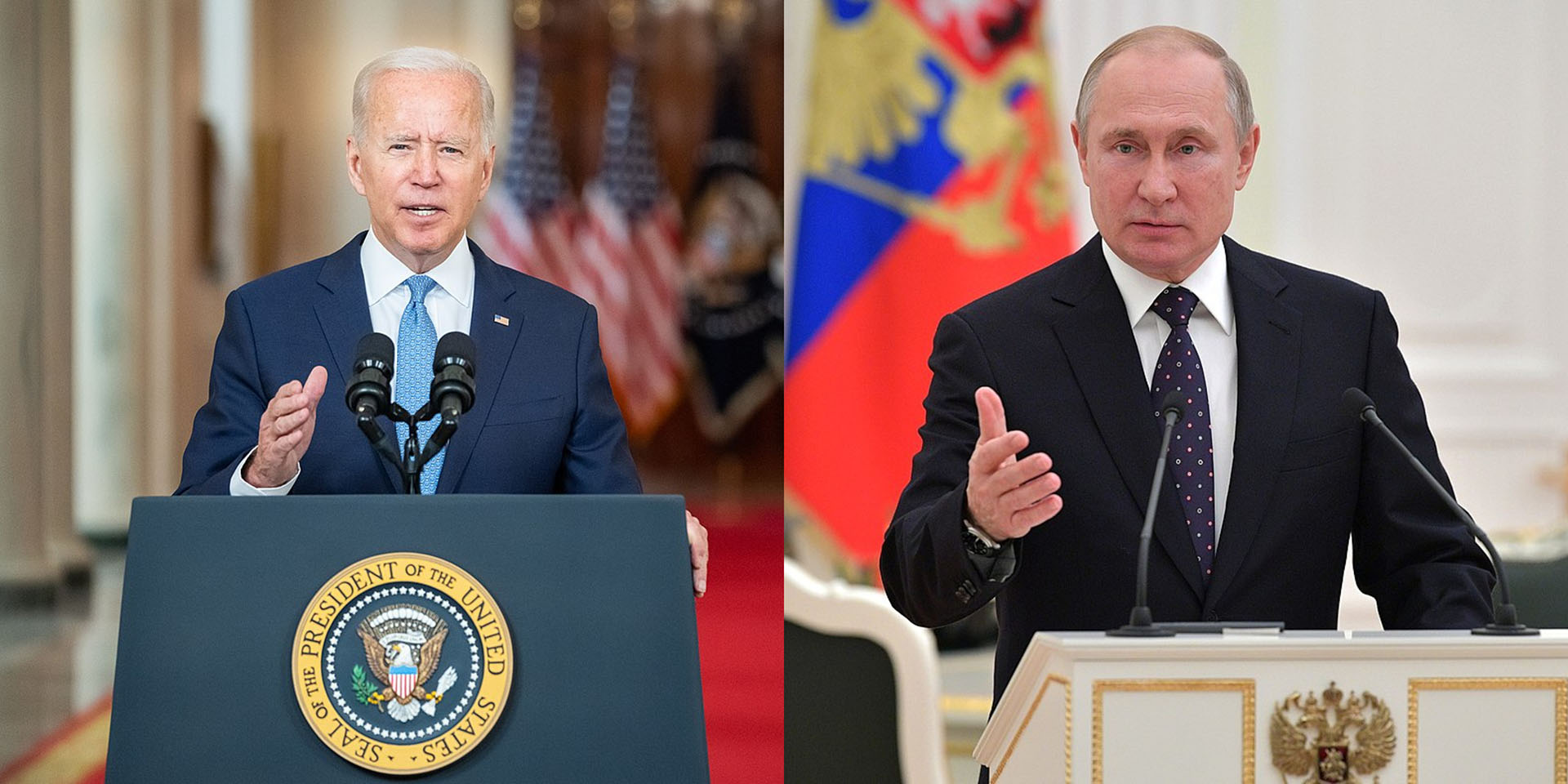
On Sunday, talks between the United States and the Russian state in Geneva, Switzerland, saw no progress, with the U.S. reaffirming its unwavering commitment to NATO and Europe’s national security. During the meeting, the U.S. opposed security guarantees Russia drafted in December, which concern Ukraine’s possible membership in NATO (North Atlantic Treaty Organization).
Russian Deputy Foreign Minister Sergei Ryabkov said, “For us, it’s absolutely mandatory to make sure that Ukraine never, never, ever becomes a member of NATO (North Atlantic Treaty Organization).” Ryabkov also claims that Russia has no intention to invade Ukraine.
In contrast, a State Department press release reports that the U.S. pressed its responsibility to NATO during the meeting and that the United States is prepared to impose high “political and economic costs” on Russia if it invades Ukraine.
Additionally, on Monday, Deputy Secretary of State Sherman assured that the U.S. would not close the doors on countries that seek to join NATO and will not agree to Russia’s demands about Ukraine’s potential membership within the international military alliance.
Overwatch focused on the situation in Ukraine and the U.S. response for this brief.
The Situation in Ukraine
Currently, Russia has built up 100,000 troops on the Russia-Ukraine border. In addition, reports indicate that tanks, fighter jets, and helicopters are moving towards the Russia-Ukraine border. The Russian state claims that the military buildup is a routine troop movement, but the U.S. and most NATO partners assess that Russia may launch a second invasion into Ukraine.
The last time Russia invaded Ukraine, February 2014, was with special forces from its Main Intelligence Directorate of the General Staff of the Armed Forces of the Russian Federation (GRU), eventually resulting in the annexation of Crimea. Fighting in Ukraine has continued since 2014, with an estimated 14,000 casualties. The frontline of the war in Ukraine is Donbas, which is in the south-eastern part of the country. The Donetsk’s People’s Republic (DPR) and Luhansk’s People’s Republic (LPR) are in Donbas and claim autonomy from the Ukrainian government. The DPR and LPR declared their independence from Kyiv in 2014 and continue to receive financial support from the Kremlin.
Pro-Russian leaders govern both the DPR and LPR, where the Russian Rouble is used instead of the Ukrainian Hryvnia. In December of 2021, Russian President Vladimir Putin invited DPR leader Denis Pushilin and LPR leader Leonid Pasechnik to join the United Russia Party, which Pushilin and Pasechnik both accepted.
On Tuesday, Ukrainian President Volodymyr Zelensky called for a summit with France, Russia, and Germany to end the conflict in Ukraine. As Zelensky takes a more diplomatic approach to the tense situation on his border, The Security Service of Ukraine, (SBU)(which deals with counterintelligence and counterterrorism matters) reports it arrested a Russian military intelligence agent planning to commit acts of “sabotage” and “terrorism” in Odessa, Ukraine.
U.S. Investment in Ukraine
According to open-source reporting, the United States provided $200 million USD to Ukraine in late December 2021. Further, the U.S. is open to Ukraine’s potential membership in NATO, an interest expressed by President Zelensky since the country’s new National Security Strategy was drafted in 2020, with aims to join NATO. Ukraine remains a strategic partner of the United States, with U.S. government funding since 2014, totaling over 2.5 billion dollars, and the continued sale of arms and munitions.
The U.S. is increasing its volume of Intelligence, Surveillance, and Reconnaissance (ISR) collection with the Russia/Ukraine conflict. ISR collects information regarding an enemy by observing and tracking their movement and communication. ISR platforms incorporate sea, air, land, and space assets to deliver time-sensitive assessments of enemies. Specifically, the U.S. utilizes the Army’s airborne reconnaissance and target exploitation multi-mission system (ARTEMIS) platform, recently pulled out of a vital testing exercise to monitor Russian troop movement.
The new ARTEMIS platform integrates sensor technology on a jet capable of flying faster and higher than traditional ISR aircraft. On January 11, 2022, an ARTEMIS-enabled plane was identified, conducting an ISR flight pattern in the Black Sea and near Russian borders. The introduction of experimental aircraft, such as ARTEMIS, shows the use of major U.S. resources to monitor events in Ukraine.
While the U.S. is providing financial support to Ukraine, the Biden Administration has ruled out sending in troops should the Russians invade.
Assessment:
With the significant military buildup on the Russia-Ukraine border, the situation between both countries could erupt into a major conflict, destabilizing more than the Donbas region, where the fighting has persisted since 2014. Should the Russians invade, their forces would support the Russian Separatists fighting for the Donetsk People’s Republic and Luhansk’s People’s Republic. Further, as Russian President Vladimir Putin annexed Crimea in 2014, he could potentially annex the DPR and LPR and station Russian troops in both territories. President Putin may also use the GRU and Foreign Intelligence Service of the Russian Federation (SVR) to build more support networks in Ukraine, as he has in the DPR and LPR, giving his political party, United Russia, additional influence in the country.
With the U.S.’s continued pledge of financial support for Ukrainian defense, non-state Russian actors could initiate cyber-attacks on U.S. entities or politicians that have advocated for broader support of Ukraine. Also, should Putin invade Ukraine a second time, Russian disinformation would see a significant increase, likely with conspiracy theories meant to distort the image of the U.S. military and government. On December 21, 2021, Russian Defense Minister Sergei Shoigu said that the U.S. was using U.S. mercenaries to plan a chemical attack in Ukraine.
While NATO has an open-door policy for countries interested in joining, the question of whether Ukraine will become part of the military alliance hasn’t been determined at this time. Overwatch analysts assess that the U.S. will not intervene militarily in Ukraine in the interim. While better equipped to handle Russian aggression than in 2014, the Ukrainians still lack critical defense systems and technology to mitigate the Russian threat. The U.S. response to a second Russian invasion of Ukraine would likely come in sanctions, but to do little to deter Russia from continuing a military campaign in Ukraine.
Further, a potential second invasion of Ukraine will likely lead to other NATO countries that share a border with Russia, increasing their security posture and lead to questions about NATO, the U.S., and its allies’ ability to deter Russian aggression in Eastern Europe. Since Russia’s hardline stance that Ukraine can never become a member of NATO, other U.S. European allies that are not members of NATO said they have a right to join the organization, including Finland and Sweden. Finland and Sweden’s comments about NATO show how the U.S.’s European allies outside of NATO have a significant interest in deterring Russian aggression.
